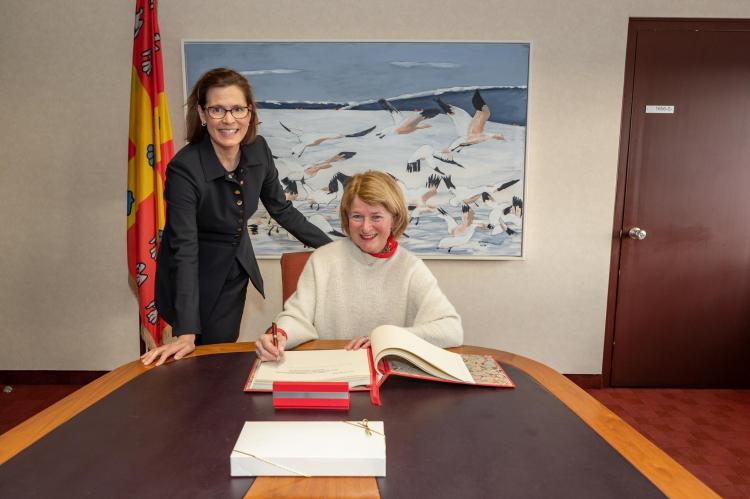The two largest northern research universities in Canada and Norway Université Laval in Québec City and the University of Tromsø - The Arctic University of Norway (UiT) in Tromsø are stepping up their collaboration with six new research projects that will draw on the expertise of teams of 26 professors in architecture, biology, biochemistry, engineering, medicine, oceanography, and physics. These international projects involve contributors and partners in Canada, France, Norway, Scotland, and the United States.

Each project will be funded in equal part by UiT and Université Laval through its Sentinel North program and will receive $225,000 over 3 years for a total investment of $1.35 million. These research projects are a concrete outcome of a partnership agreement the two institutions renewed in June 2018.
Originally signed in 2009, the agreement aims to encourage collaborative and transdisciplinary research and further strengthen ties between the two universities, who innovate together in the field of Arctic research and organize student exchanges, international research expeditions, and major international conferences on the Arctic.
"Our universities recognize how important it is to build strong ties to research the circumpolar Arctic and train the next generation of scientists," said Université Laval president Sophie D'Amours and UiT president Anne Husebekk during the Norwegian delegation's visit to Université Laval earlier this week. "The renewed agreement and new joint projects confirm our commitment to developing and maintaining this international partnership and to pooling our expertise to better understand the rapid evolution of the Arctic and its impacts on ecosystems and human health from a sustainable development perspective."
International and transdisciplinary research projects
Professors Pierre Ayotte (UL) and Torkjel M. Sandanger (UiT) will work with their colleagues to establish an international cooperative network to detect the presence of emerging contaminants in circumpolar regions, monitor their evolution over time, and assess the risks of exposure for populations living in those regions.
The team led by Professors Marcel Babin (UL) and Jørgen Berge (UiT) will develop a better understanding of the impact of light variability on the biological production of ice-covered Arctic seas by developing and using marine robotics, autonomous underwater vehicles, and advanced optical technologies.
Professors Louis Fortier (UL) and Malin Daase (UiT) and their colleagues will seek to understand how different species of copepods tiny crustaceans that are a key link in the Arctic food chain respond to changes in light cycles, water temperatures, and ice cover in order to better predict the future behaviour of these organisms in a changing Arctic Ocean.
The team led by Professors Louis Gosselin (UL) and Raymond Riise (UiT) will develop high energy efficiency buildings adapted to the environmental and climatic conditions of the High Arctic, while taking into account the cultural and socioeconomic realities of the populations living there.
Professors Frederic Maps (UL) and Sünnje Basedow (UiT) will work with their colleagues to combine artificial intelligence, remote sensing, and image analysis to conduct the first-ever large-scale observation of different species of copepods of the genus Calanus, a type of zooplankton that plays a crucial role in the ecosystem of the northern seas.
In addition, Professors Johann Lavaud (UL) and David Hazlerigg (UiT) and their team will seek to better understand the circadian rhythm and chronobiology of two Arctic aquatic species that are of great ecological and economic importance to several circumpolar populations: the Arctic diatom Fragilariopsis cylindrus and the Atlantic salmon.













